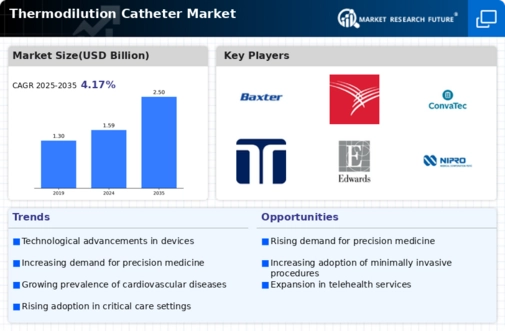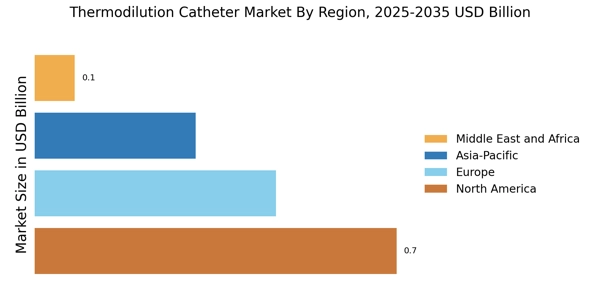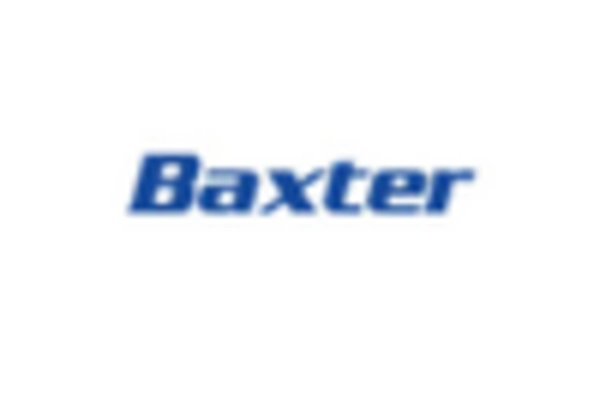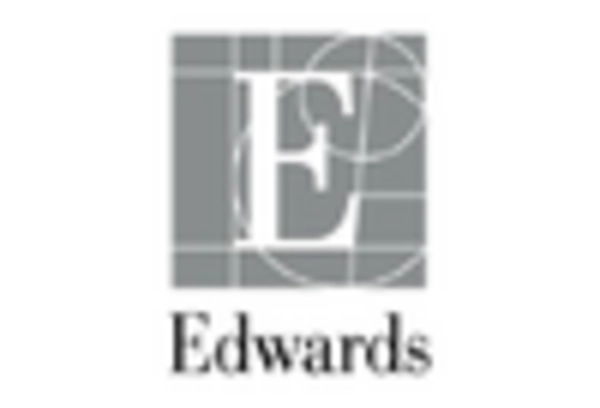Growing Focus on Patient-Centric Care
The increasing emphasis on patient-centric care is shaping the Thermodilution Catheter Market. Healthcare providers are increasingly prioritizing patient outcomes and experiences, leading to a demand for devices that enhance monitoring and treatment efficacy. Thermodilution catheters, known for their precision in measuring cardiac output, align well with this focus. As hospitals strive to improve patient satisfaction and reduce complications, the adoption of advanced monitoring technologies becomes essential. Market analysis indicates that healthcare systems are investing more in technologies that support personalized medicine, which is likely to drive the demand for thermodilution catheters. This trend reflects a broader shift in the healthcare landscape towards solutions that prioritize the needs and preferences of patients.
Rising Prevalence of Cardiovascular Diseases
The increasing incidence of cardiovascular diseases is a primary driver for the Thermodilution Catheter Market. As heart-related ailments become more prevalent, the demand for accurate hemodynamic monitoring rises. According to recent data, cardiovascular diseases account for a significant portion of global mortality rates, necessitating advanced monitoring solutions. Thermodilution catheters provide precise measurements of cardiac output, which is crucial for managing patients with heart conditions. This growing need for effective monitoring tools is likely to propel the market forward, as healthcare providers seek reliable methods to assess and treat cardiovascular issues. Furthermore, the aging population, which is more susceptible to these diseases, further amplifies the demand for thermodilution catheters, indicating a robust growth trajectory for the market.
Technological Innovations in Catheter Design
Technological advancements in catheter design are significantly influencing the Thermodilution Catheter Market. Innovations such as improved materials, enhanced sensor technology, and miniaturization of devices are making thermodilution catheters more efficient and user-friendly. These advancements not only enhance the accuracy of measurements but also improve patient comfort during procedures. For instance, the integration of wireless technology allows for real-time monitoring, which is becoming increasingly important in critical care settings. As hospitals and healthcare facilities adopt these cutting-edge technologies, the market is expected to experience substantial growth. The introduction of smart catheters that can provide additional data analytics may also attract more healthcare providers, thereby expanding the market further.
Regulatory Support and Reimbursement Policies
Supportive regulatory frameworks and favorable reimbursement policies are crucial drivers for the Thermodilution Catheter Market. Governments and health organizations are increasingly recognizing the importance of advanced monitoring technologies in improving patient outcomes. As a result, there is a growing trend towards establishing reimbursement policies that cover the costs associated with thermodilution catheters. This financial support encourages healthcare providers to adopt these technologies, thereby expanding the market. Additionally, regulatory bodies are streamlining the approval processes for innovative medical devices, which may further enhance market growth. The combination of supportive regulations and reimbursement incentives is likely to create a conducive environment for the thermodilution catheter market, fostering innovation and accessibility.
Increasing Demand for Minimally Invasive Procedures
The shift towards minimally invasive procedures is a notable driver for the Thermodilution Catheter Market. As healthcare professionals and patients alike favor less invasive options, the demand for thermodilution catheters, which facilitate such procedures, is likely to rise. These catheters allow for accurate cardiac output measurements without the need for open-heart surgery, thus reducing recovery times and hospital stays. Market data suggests that the minimally invasive surgery market is projected to grow significantly, which will likely benefit the thermodilution catheter segment. This trend aligns with the broader movement towards patient-centric care, where the focus is on enhancing patient outcomes while minimizing risks associated with traditional surgical methods.


















Leave a Comment